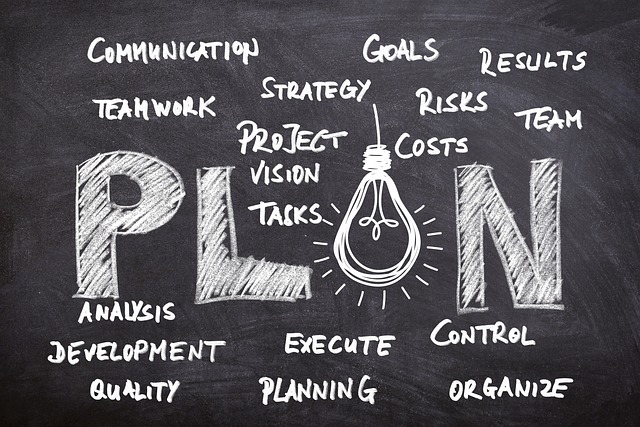The Role of Setting Priorities in Work-Life Balance
Setting priorities plays a pivotal role in achieving work-life balance, especially for entrepreneurs. This balance becomes crucial when you’re immersed in the hustle and bustle of running a business. Imagine running your own venture, grappling with countless tasks every day, and feeling the pressure to be everywhere at once. That’s when establishing priorities can transform a chaotic work environment into a more manageable and fulfilling experience. Creating a clear path through your obligations allows you to separate what truly matters from the noise, which is essential for nurturing both your career and personal life.
When you prioritize effectively, you can align your daily tasks with your core values and long-term goals. Many entrepreneurs find themselves overwhelmed by demands that compete for their attention. Without a solid system in place, it’s easy to lose sight of the bigger picture. It is crucial to distinguish between tasks that matter the most and those that can wait or even be delegated. By focusing on high-value activities, you don’t just optimize your work hours; you also create more space in your life for personal pursuits, relationships, and relaxation. The importance of setting priorities cannot be overstated. It’s not merely about getting things done; it’s about doing the right things that advance your business while enabling a rich, fulfilling personal life.
Understanding the Importance of Work-Life Balance
Work-life balance entails allocating your time and energy in ways that cater to both your professional and personal needs. It’s not a one-size-fits-all approach, and individual preferences will vary widely. There might be days when work takes precedence, while other days might call for personal commitments, like family or hobbies. Understanding that balance isn’t just a destination, but rather a continual practice is crucial. For entrepreneurs, the line between work and life can blur significantly, often leading to burnout if not monitored carefully. To implement work-life balance effectively, it’s essential to recognize your limits and respect them.
Entrepreneurs often grapple with the myth of the all-consuming business. They might think that to conquer challenges and achieve success, they need to be plugged into work around the clock. Yet, research highlights that the most successful entrepreneurs look after their mental and physical well-being. They engage in self-care routines, spend time with loved ones, and pursue interests outside their ventures. These entrepreneurs intuitively understand that by contributing to their personal satisfaction, they set themselves up for greater achievements professionally. Balancing the scales between work and personal life not only fortifies mental health but also fosters creativity and productivity in the business realm. In turn, this dual investment in personal and professional growth pays significant dividends.
Steps to Establish Priorities
Implementing effective prioritization requires thoughtful steps. Start by assessing your current commitments. Ask yourself: What tasks do I engage in daily? Which ones bring the most value? Use tools like the Eisenhower Matrix or ABCD prioritization method to categorize tasks by urgency and importance. In this framework, categorize tasks into four quadrants: urgent and important, important but not urgent, urgent but not important, and neither urgent nor important. This categorization shines a light on what truly deserves your immediate attention and what can be re-evaluated or delegated.
Emphasize creating long-term versus short-term priorities. Long-term priorities align with your significant life goals and business aspirations, while short-term priorities revolve around immediate tasks that need resolution. Both are crucial, yet tending to the long-term vision often helps in streamlining day-to-day activities. Setting smart, achievable goals in both realms brings clarity. Consider creating weekly or monthly goals that help you stay on track and measure your progress. This tracking not only motivates but also helps identify areas where adjustments are necessary, ensuring you remain resolutely focused.
Effective Time Management Techniques
Once you establish your priorities, the next challenge lies in effective time management. Time is a precious commodity for entrepreneurs, and managing it efficiently ensures you maintain that work-life balance. One trustworthy method is the Pomodoro Technique. It involves breaking your work into intervals, typically 25 minutes long, separated by short breaks. This technique enhances focus and stamina by preventing burnout and establishing a rhythm to your workday. Incorporating scheduled breaks provides you a chance to recharge, reflect, and reset your mind for new tasks.
Another technique involves block scheduling, where you designate specific blocks of time in your calendar for various types of work. Whether you reserve mornings for project brainstorming or afternoons for meetings, it provides structure to your day. You can also leverage technology for organizational help. Numerous apps can assist with task management, reminders, and note-taking. Tools like Trello, Asana, or even simple calendar apps can streamline your task lists and help you stay accountable to your priorities.
The Challenge of Distractions
In today’s hyper-connected world, distractions lurk everywhere. As an entrepreneur, you might find it challenging to focus amidst the constant influx of notifications and emails. Social media, while beneficial for networking and marketing, can also become a double-edged sword. Addressing distractions requires deliberate effort. Start by designating work hours where you minimize interruptions. Communicate these boundaries clearly to your team, family, and friends to enhance understanding.
Consider creating a dedicated workspace that signals when you’re ‘in the zone.’ This physical separation can help sharpen your mental focus. The practice of utilizing ‘do not disturb’ modes on devices during focused work hours can significantly reduce digital distractions. Moreover, scheduling times to check emails and messages ensures you stay connected without allowing these tasks to derail your progress. This disciplined approach fosters an environment where productivity thrives, allowing you to focus on what truly advances your business.
Balancing Personal Life and Entrepreneurial Goals
Setting specific boundaries between your work and personal life operates on two primary levels: time and mental space. While work hours are controllable to an extent, your mental space often requires a bit more finesse. After work hours, consciously disconnect from work-related thoughts to be present in your personal life. Engaging in physical activities, reading, or hobbies can effectively transition your brain away from internal distractions and into the present. The well-known idea of the ‘work mindset’ hinders your ability to be fully present at home, which can create friction in personal relationships.
Moreover, embrace the art of delegation within your business. As an entrepreneur, there’s a strong urge to handle everything yourself. However, nurturing a strong team allows you to distribute workloads and create breathing room for your personal life. Share responsibilities based on individual strengths and expertise, fostering an atmosphere of collaboration. This approach not only lightens your burden but also empowers your team. A business environment where members feel valued and trusted can yield immense benefits, including improved morale and productivity.
Cultivating Mindfulness and Reflection
Incorporating mindfulness techniques into your daily routine can help you stay centered. Mindfulness cultivates an awareness of the present moment, equipping you to respond to challenges more effectively rather than becoming overwhelmed. Simple practices such as meditation, deep breathing exercises, or even reflective journaling at the end of the day can tremendously benefit mental clarity. Spend a few minutes each day assessing what worked well, what challenges you faced, and how you responded. This reflective habit can refine your priority-setting process over time.
In addition, consider regular check-ins with yourself regarding your work-life balance. Is your current priority list serving you well? Are there aspects of your personal life that you feel are neglected? Acknowledging fluctuations in your priorities ensures that you adjust your strategies accordingly. A flexible approach to work-life balance allows you to pivot and respond to changes, enhancing both productivity and personal fulfillment.
Conclusion
The journey of an entrepreneur is one of continuous learning and growth. Setting priorities doesn’t just optimize your workday; it’s a pathway to cultivating a satisfactory and balanced life. Remember, successful entrepreneurs prioritize not just their businesses but also their down time, relationships, and self-care. Balancing work and life is an ongoing endeavor, requiring adaptation and reflection. However, by placing an emphasis on priority setting, you unlock the potential to flourish in both business and personal dimensions.
FAQ
1. Why is setting priorities important for work-life balance?
Setting priorities directs your attention to what genuinely matters, helping you allocate your time and energy effectively. This approach not only enhances productivity but also ensures you make space for personal relationships and self-care.
2. How can I start setting priorities?
Begin by evaluating your tasks using tools like the Eisenhower Matrix. Classify tasks based on their urgency and importance. This technique helps you identify which activities deserve immediate attention and which can wait.
3. What are some effective time management techniques?
The Pomodoro Technique and block scheduling are popular time management methods. The Pomodoro Technique encourages focus through timed work intervals followed by breaks, while block scheduling allocates specific time slots for different tasks to enhance productivity.
4. How can I manage distractions while working?
Designate specific work hours, minimize interruptions, and consider creating a dedicated workspace. Also, utilize ‘do not disturb’ settings during focused work periods to maintain concentration.
5. How often should I reflect on my work-life balance?
Regular check-ins, such as weekly or monthly reflections, help assess if your priority list serves your personal and professional needs. Adjusting based on these reflections promotes ongoing balance and satisfaction.



